Quebec City
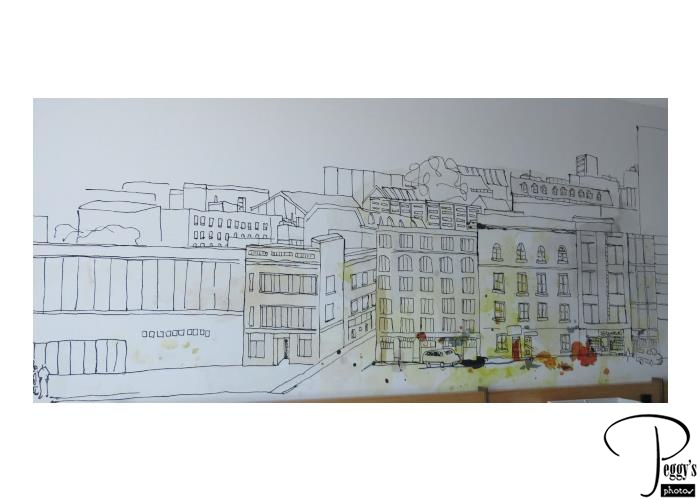
My daughter and I took a short vacation to, first, Quebec City and, then, to Montreal, both in French Canada. My original flight to Chicago, where I would meet my daughter at O’Hare, was a red–eye. However, United e–mailed me that thundershowers were predicted for the morning when my plane was due in and would I want to change my flight. I did and flew into Chicago early and stayed overnight in Chicago (there were no thunderstorms). Then both my daughter and I traveled to the airport and got on a plane so small that it had only one seat on one side of the aisle and two seats on the other side. The plane probably carried about 50 passengers. We didn’t get to our hotel in Quebec City until close to dinner time. Quebec City is the capital of the province of Quebec, known as French Canada, and is located in eastern Canada. Photo: A wall mural of the old Saint–Roch district that our hotel was in.

Quebec City
Quebec City
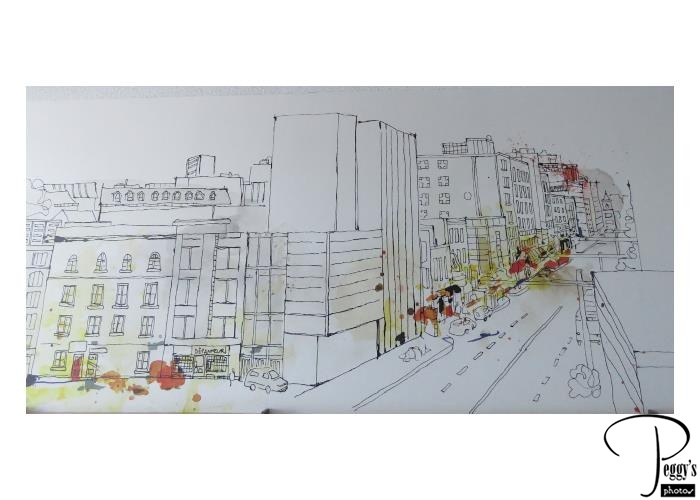
The other half of the mural. Our hotel, in Saint–Roch, was in an historic district but not in the main tourist one, which meant we had to find transportation to and from the main one, but we were able to use Starwood points for our hotel. Quebec City has a bus system but no underground Metro. It is more convenient to stay at a hotel right in the main tourist district.

Quebec City
Saint-Roch
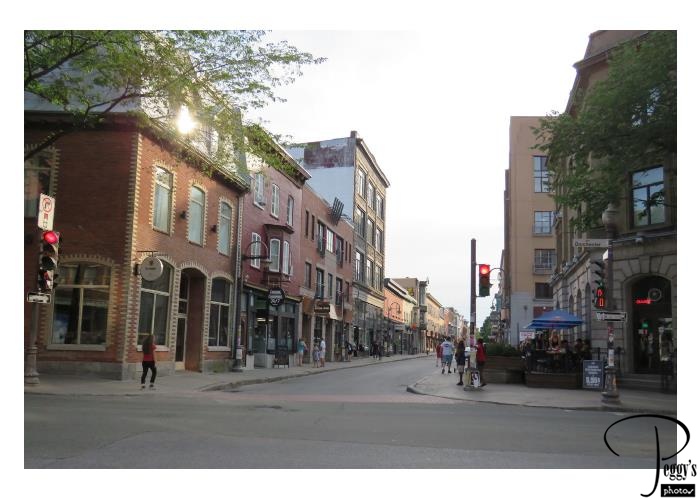
Saint–Roch was first settled in 1620. From the mid–19th century to the 1960s, the rue Saint–Joseph, near where our hotel was located, was the main commercial street in Quebec City. During the second half of the 20th century, the district fell into decline, but in 2000, it was renovated. It now draws a hip crowd to its shops and restaurants. The official language of the province of Quebec is French. The street signs, the store signs, and the districts are all in French. Menus are usually in both English and French. You really feel as if you are in France in French Canada. It was very helpful that my daughter speaks very good French as not all French Canadians speak English. It also gave a very French feel to our trip.

Saint-Roch
Quebec City Historical District
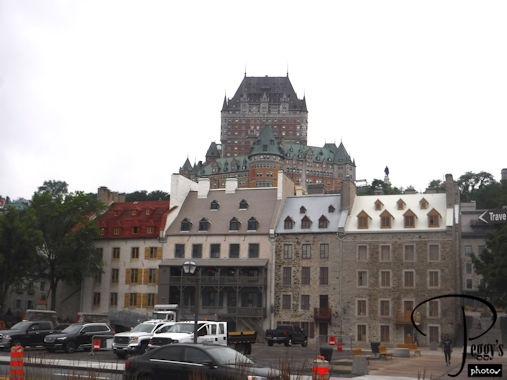
I have been to Quebec City at least two times before but I was very young and all that I remembered of it was the Chateau Frontenac––now the Fairmont Le Chateau Frontenac. It is the hotel on top of the hill in the Upper Town. The buildings in front of the photo are in the Lower Town. In 1535, the French explorer Jacques Cartier visited this area where there was a small Iroquois village named Stadacona. In 1608, French explorer and naviagator Samuel de Champlain founded Quebec City. Innu and Algonquins were here then. In 1628, an invasion by David Kirke and his brothers forced the French to leave. However, they returned in 1632 and built Quebec City as a traditional 17th–century French city. We started off visiting the Lower Town our first full day in Quebec City.

Quebec City Historical District
Lower Town
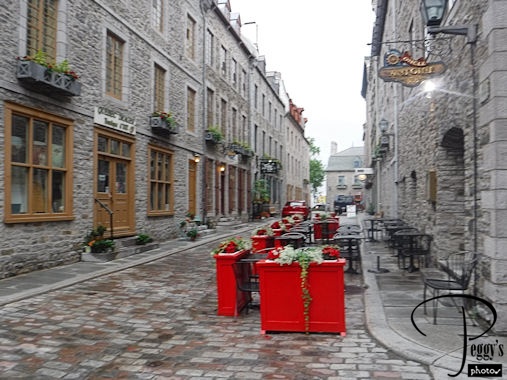
The Lower Town. It was raining so there were few people out. The cobblestones were wet. The Lower Town was where the merchants, sailors, and artisans lived. The upper classes lived in the Upper Town.

Lower Town
Funicular
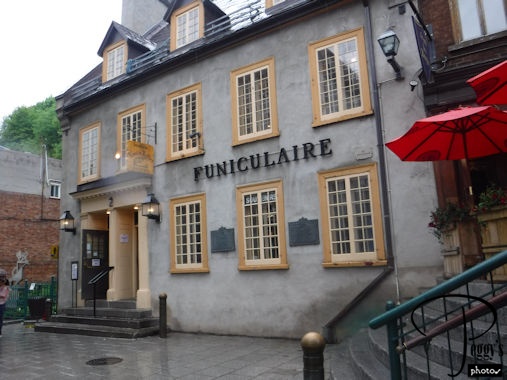
From the Lower Town, there were two ways to reach the Upper Town. One was by walking up what are called the Breakneck Steps; the other way was to take the funicular up, which we did.

Funicular
Chateau Frontenac
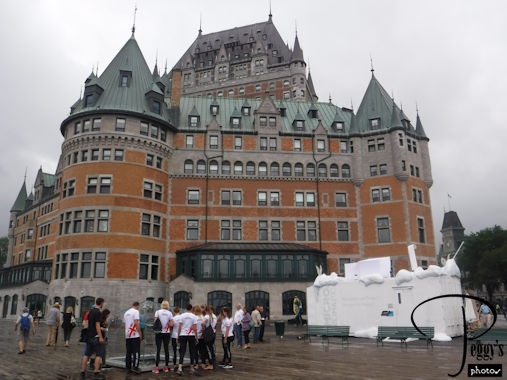
The funicular let us off in front of the Chateau Frontenac, which opened in 1893 and was one of the chateau–style hotels built for the Canadian Pacific Railway. I remember staying at the Chateau Frontenac 63 years ago.

Chateau Frontenac
Upper Town
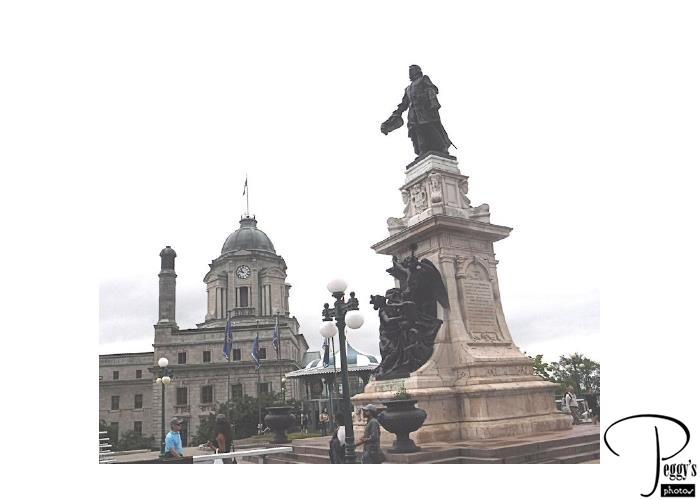
The main square of the Upper Town is in front of the Chateau Frontenac with a statue of Samuel de Champlain.

Upper Town
Notre-Dame de Quebec
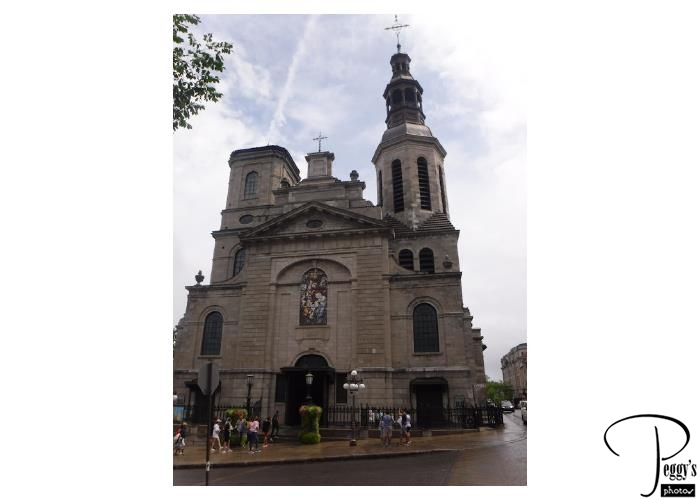
A short walk down the hill but still in the Upper Town was the Cathedral–Basilica of Notre–Dame de Quebec, 1647.

Notre-Dame de Quebec
Notre-Dame de Quebec
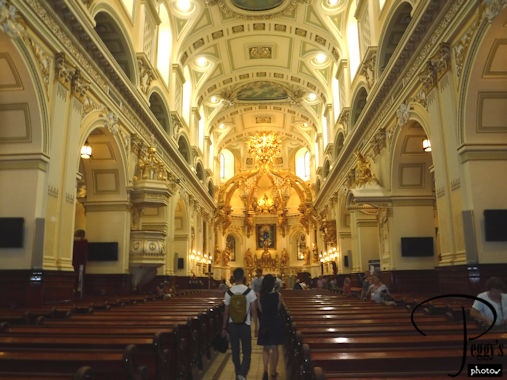
Inside Notre–Dame.

Notre-Dame de Quebec
Hop-on Hop-off Bus
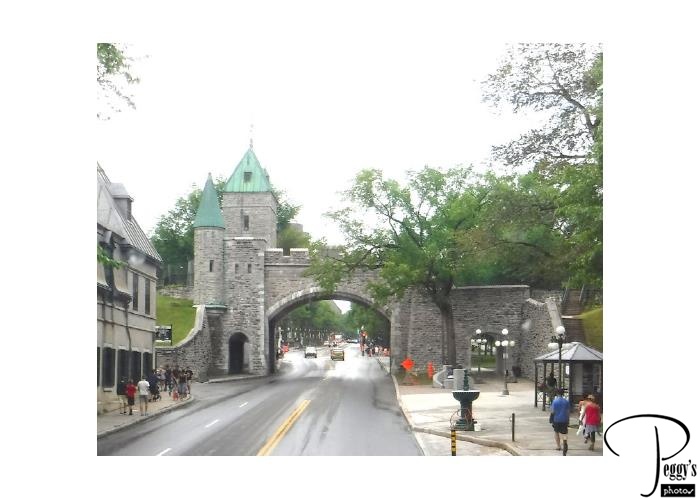
From Notre–Dame, we walked farther down the hill but didn’t know exactly where we were. We had three unhelpful maps of Quebec City with us. We did find out where the hop–on hop–off bus stopped nearby and got on it. We had already taken the bus from near our hotel to the Lower Town. The hop–on hop–off bus will give you an overview of Quebec City but it can be difficult to find its stops. On the bus, we saw the city wall and Porte St. Louis, built 1620–1665. Quebec City’s ramparts date back to the 17th century but some of the walls and gates have been rebuilt. Quebec City has the only remaining fortified city walls in North America north of Mexico.

Hop-on Hop-off Bus
Hop-on Hop-off Bus
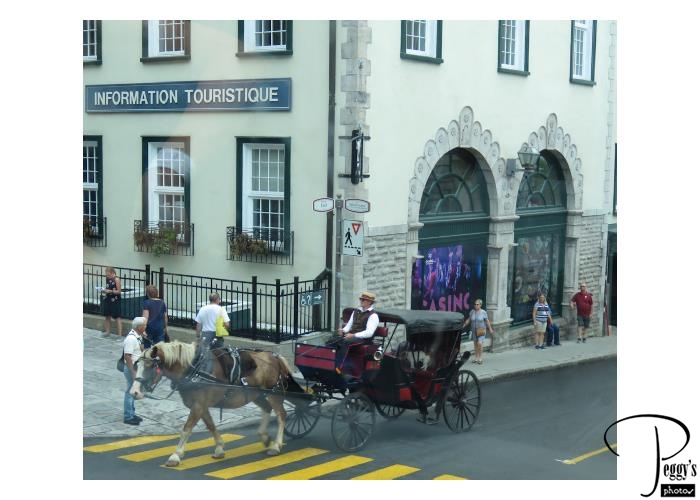
We thought that we could take the bus back to our starting location near our hotel but its run had ended and it dropped us off in front of the tourist office, Information Touristique, at the main square of the Upper Town, requiring us to take a taxi back to our hotel. At the Information Touristique, you can book day tours and also exchange your money for Canadian dollars.

Hop-on Hop-off Bus
Food Tour
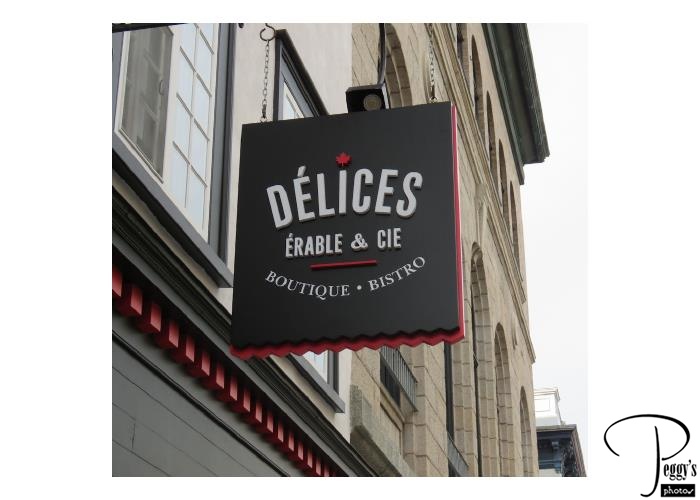
We next took an early evening food tour in Quebec City. One of our stops was at Delices which uses maple syrup in all their products.

Food Tour
Food Tour
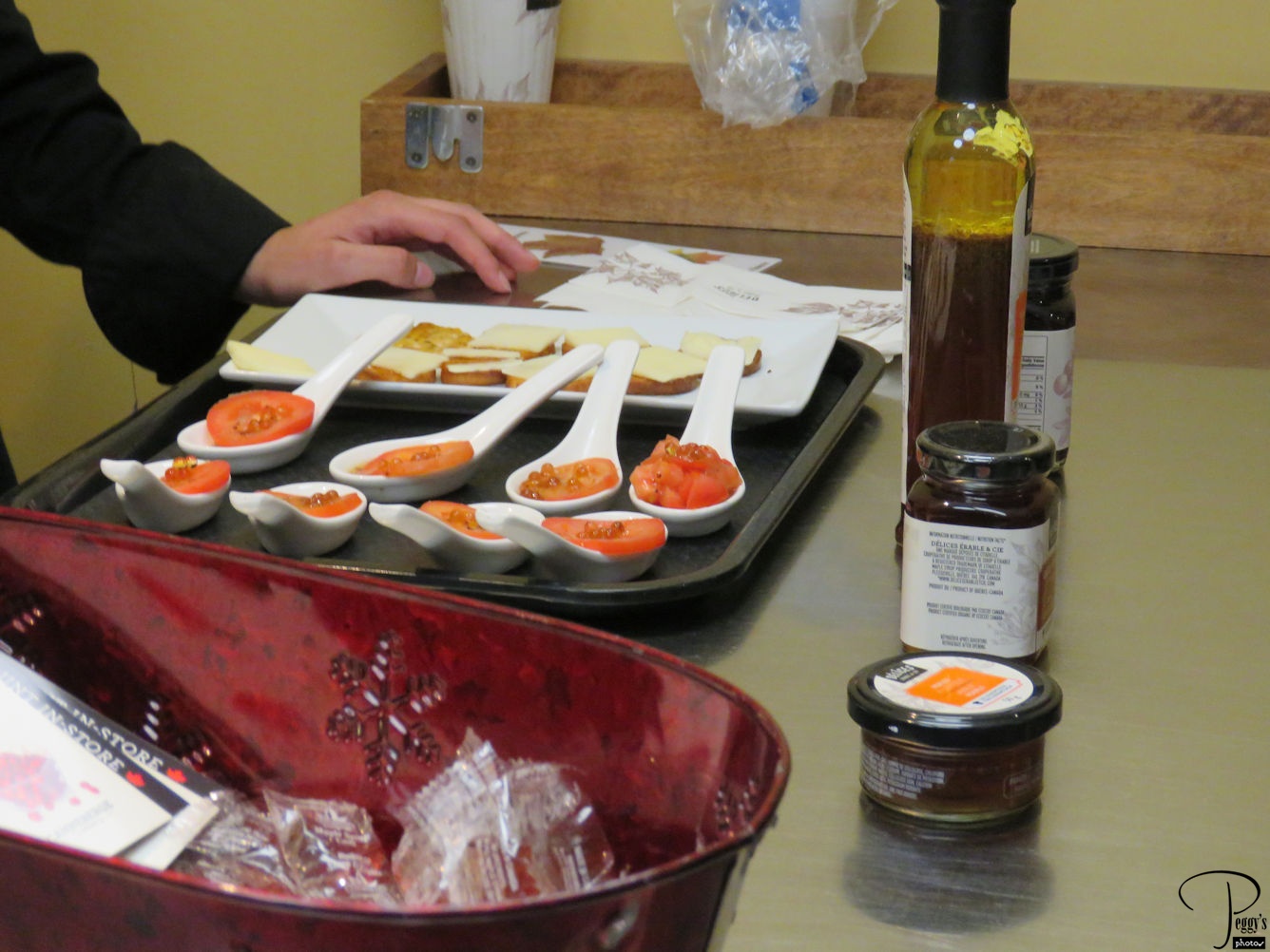
We had maple sugar over items you wouldn’t think of putting maple syrup on, such as tomatoes. Not all that good. We made several other food stops.

Food Tour
Mural
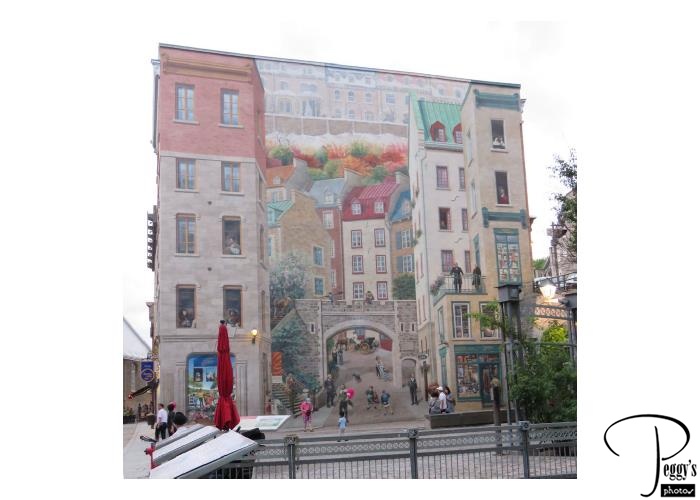
On our walk to different places where we would eat, we passed this mural, Fresque des Quebecois on Cote de la Montagne, that recounts the story of Quebec City.

Mural
Quebec at Night
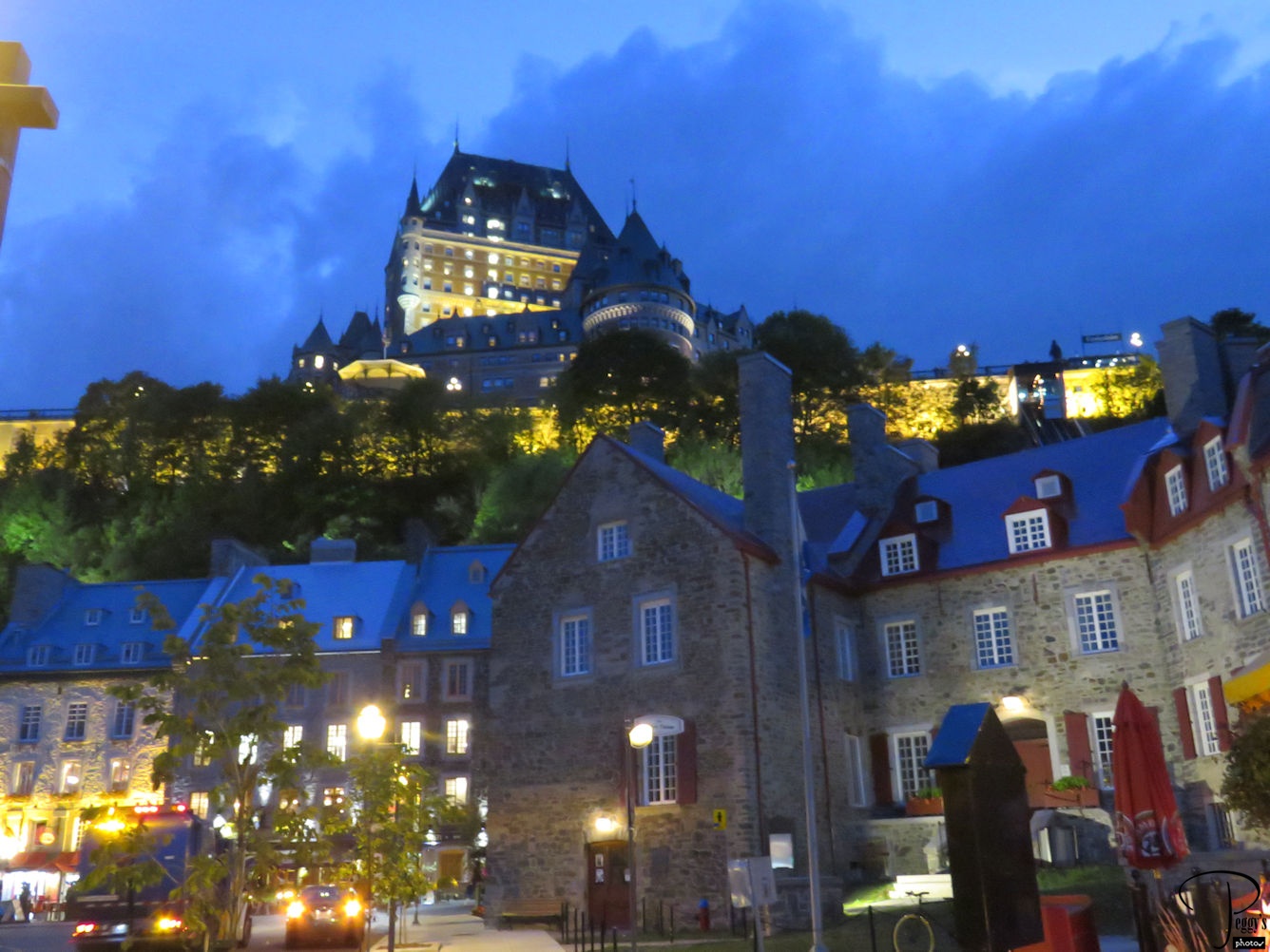
Our food tour ended after the sun went down and we had some views of Quebec City at night and the Chateau Frontenac lit up.

Quebec at Night
Day Trip from Quebec City
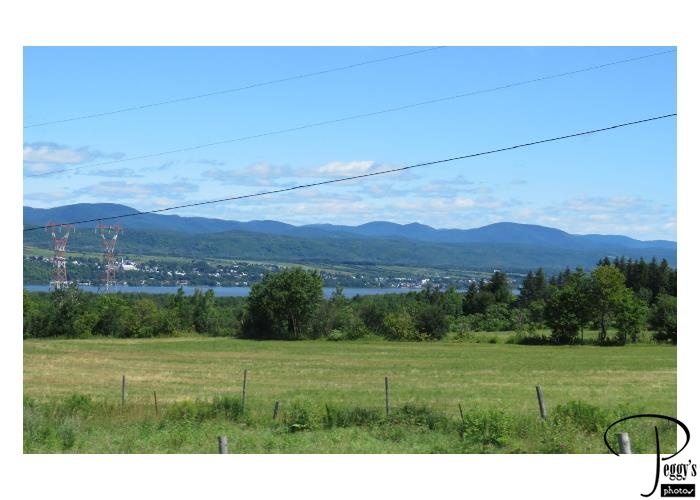
Today, we took a day trip from Quebec City to the Ile d’Orleans in the Saint Lawrence River, Montmorency Falls, and the Basilica of Sainte–Anne–de–Beaupre. The photo was taken on the Ile d’Orleans, one of the first parts of Quebec to be colonized by the French. The island is residential with very small villages and much farmland.

Day Trip from Quebec City
Ile d’Orleans
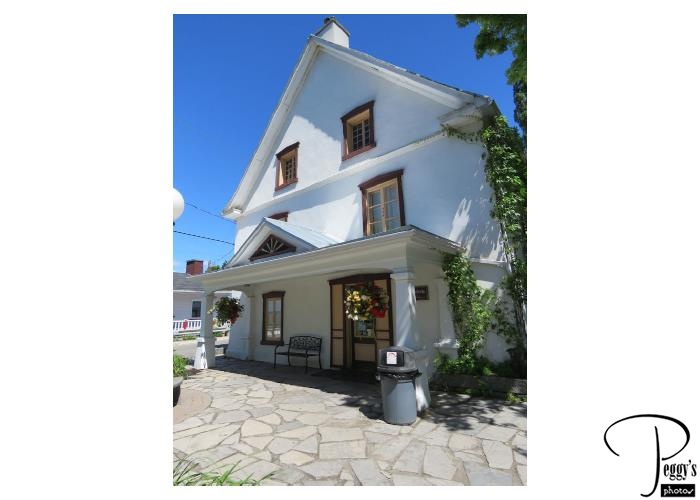
We drove around the island and stopped at the Chocolaterie de l’Ile d’Orleans, which imports chocolate from Belgium and then makes their own chocolates from it. You can take food tours from Quebec City to the Ile d’Orleans, though we didn’t take one.

Ile d’Orleans
Montmorency Falls–MOVIE
Our next stop was at Montmorency Falls, which are 272 feet (83 m) tall. You can take a cable car to the top of the cliff, walk across the suspension bridge above the falls, and walk down steps to the bottom of the cliff. You can also come down via the cable car.
Youtube: https://youtu.be/Jpn28qC–Xos

Montmorency Falls–MOVIE
New France Heritage House
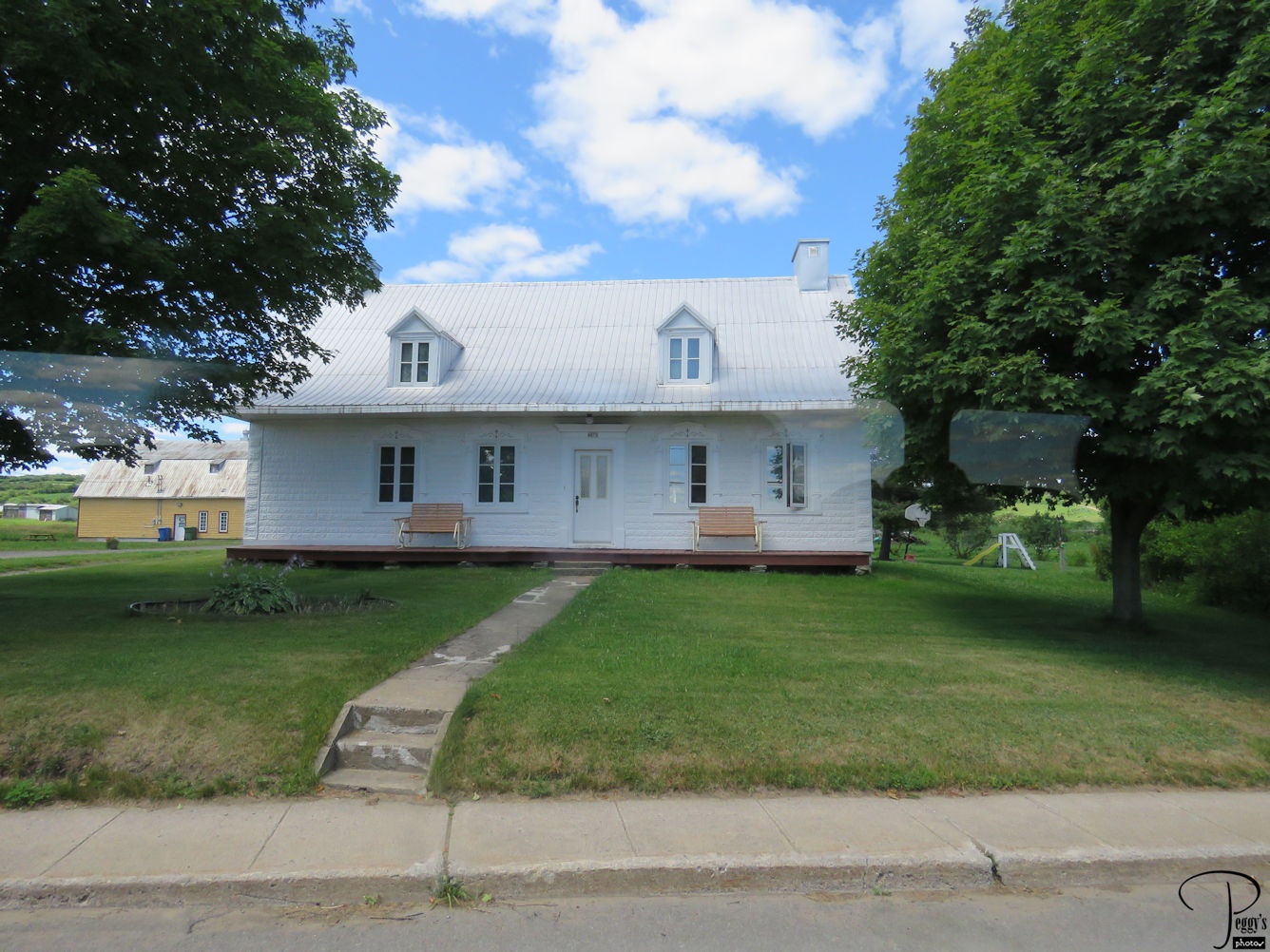
The French settlers built houses that adapted the style of the houses in Normandy, France. They were usually one story with everything even on each side of the door in the middle. They also had tall and steep roofs made of tin plate. There were many of such houses in this area.

New France Heritage House
Albert Gilles Copper Art Studio
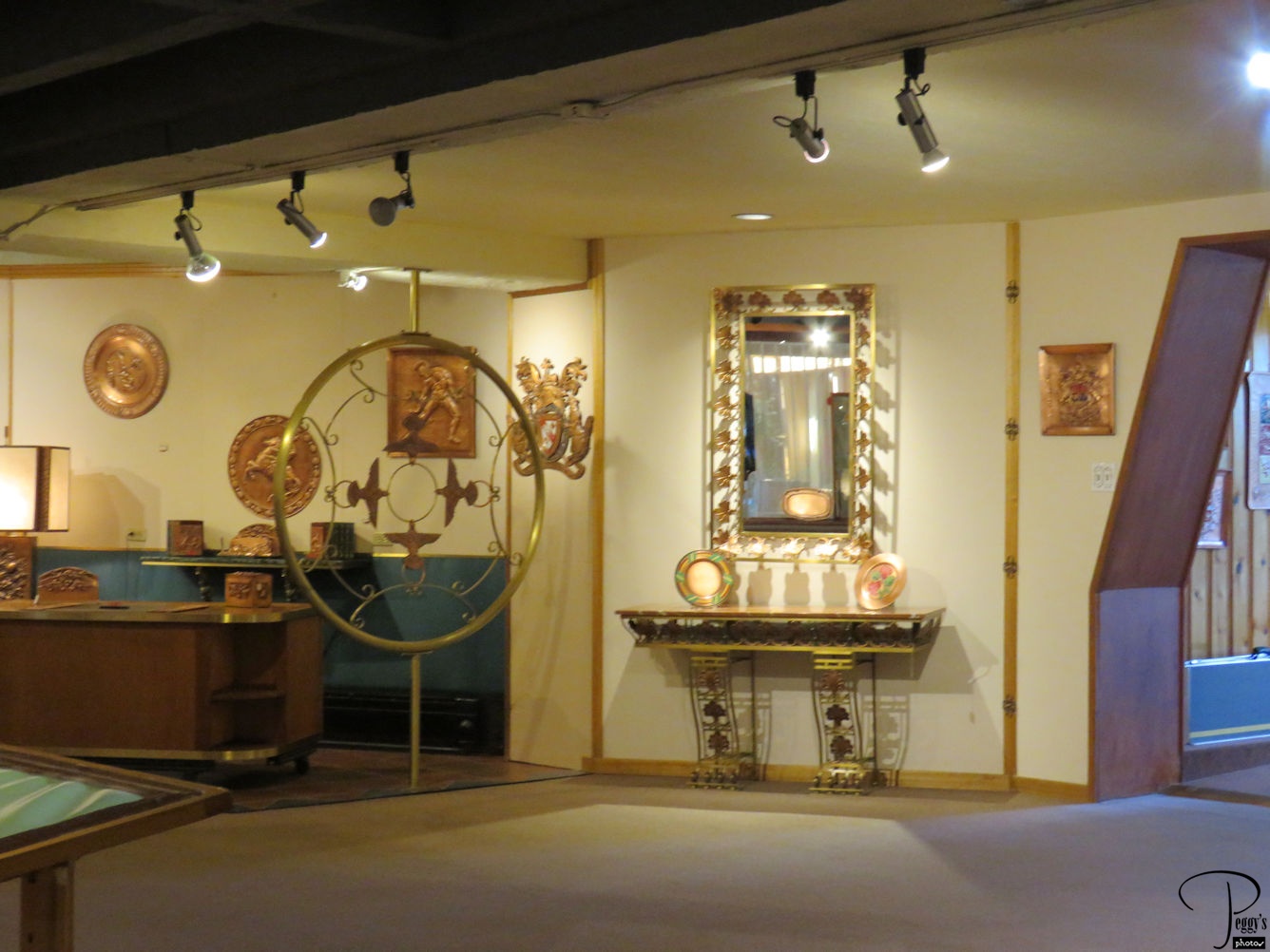
Our next stop was at the Albert Gilles Copper Art Studio, where we had a demonstration as to how designs are put onto copper. Canada is a major producer of copper. Also, many copper items were for sale.

Albert Gilles Copper Art Studio
Sainte-Anne-de-Beaupre
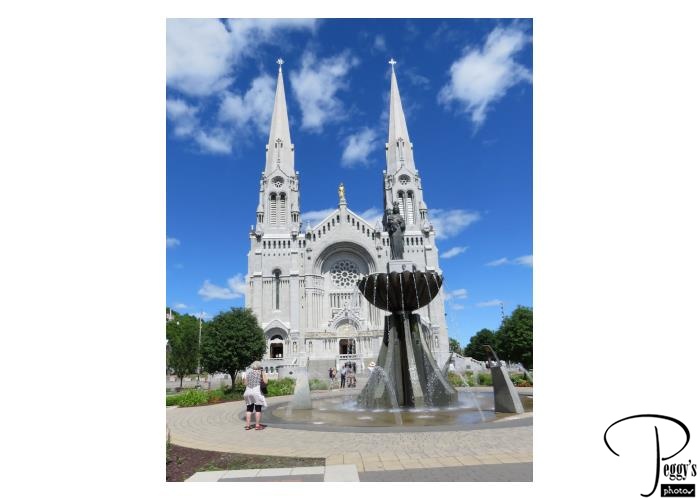
Our last stop was at the Basilica of Sainte–Anne–de–Beaupre, which is a major pilgrimage site, known for its miracles of curing the sick and disabled. The present basilica was built in 1926.

Sainte-Anne-de-Beaupre
Sainte-Anne-de-Beaupre
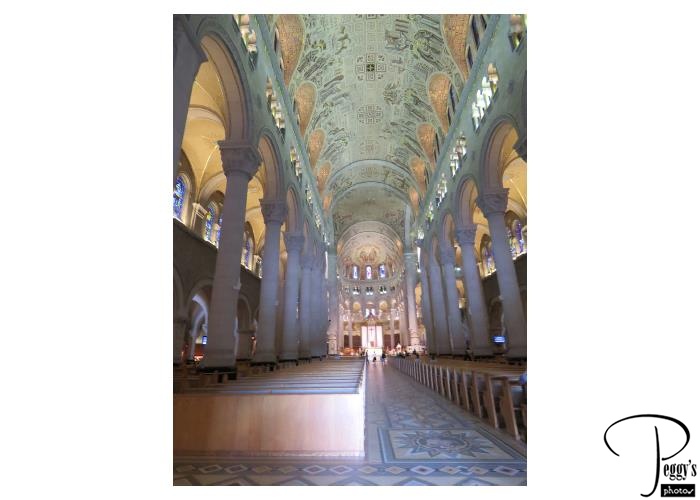
Inside the Basilica of Sainte–Anne–de–Beaupre.

Sainte-Anne-de-Beaupre
Sainte-Anne-de-Beaupre
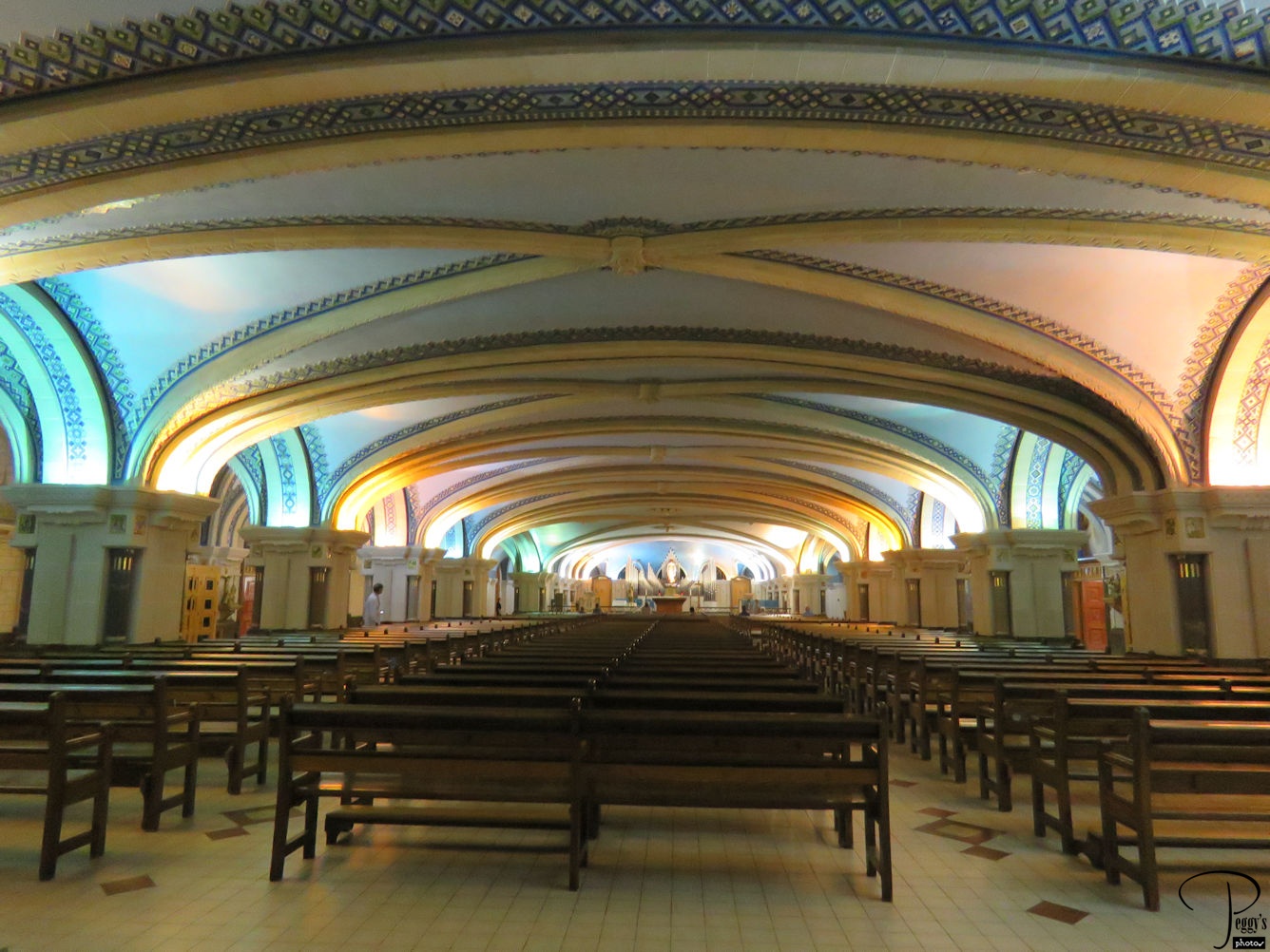
Below the main basilica was a chapel with multicolored arches.
I have put my photos of Quebec City on three slideshows. Go to
http://www.peggysphotos.com/quebec–city–1/
http://www.peggysphotos.com/quebec–city–2/
(Slide Shows, Canada, Quebec, “Quebec City–1 and –2).
http://www.peggysphotos.com/montmorency–falls–sainte–anne–de–beaupre/
(Slide Shows, Canada, Quebec, “Montmorency Falls, Sainte–Anne–de–Beaupre”).

Sainte-Anne-de-Beaupre
VIA Rail Canada
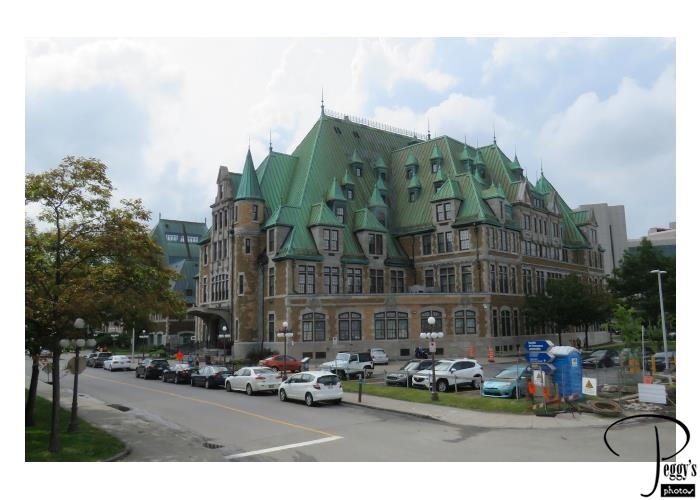
The next day we left Quebec City and took a VIA Rail Canada train from the Gare du Palais, in the photo, to Montreal, about a three–hour ride. You took your luggage on the train by yourself, which was easy to do as the train door was level with the platform. There was plenty of leg room and an individual tray on the back of each seat. Additionally, a snack cart was brought around.
We both very much liked our visit to Quebec City. We didn’t see all of the tourist sites such as the Citadel and the Changing of the Guards on our short visit as we ran out of time.

VIA Rail Canada
Montreal
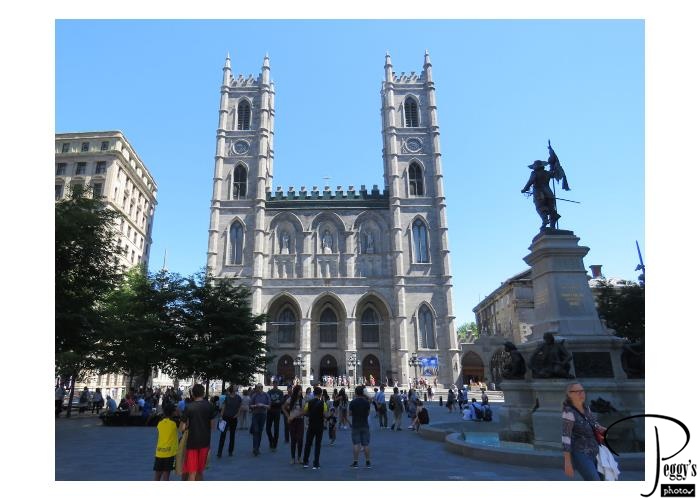
We arrived in Montreal early enough to do some sightseeing. Our hotel was very conveniently located in the main historic area. I have been to Montreal before but was so young that I remembered nothing about it at all. Our first stop was at the Basilique Notre–Dame, 1829, the centerpiece of the area.

Montreal
Basilique Notre-Dame
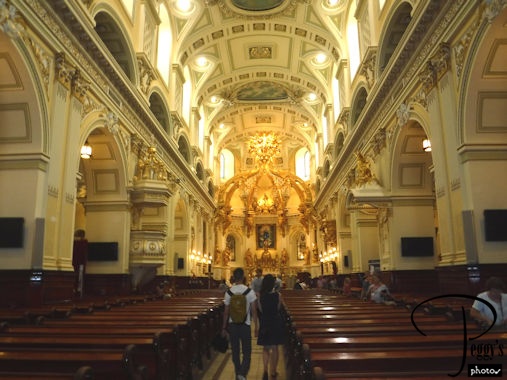
Inside the basilica.

Basilique Notre-Dame
Montreal
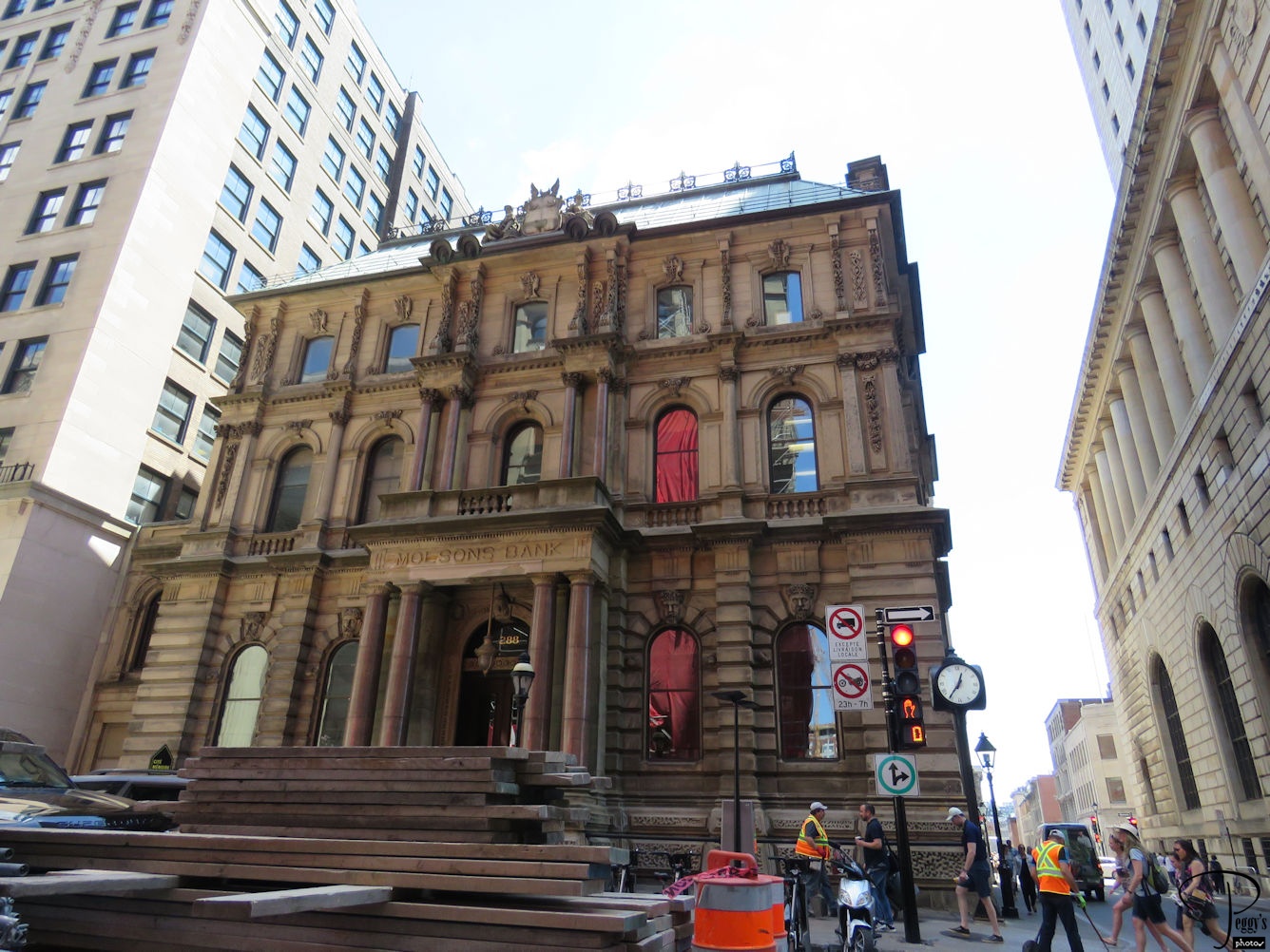
The historic area of Old Montreal has both old buildings and new modern buildings. It has a big city feel, which was a bit of a culture shock after coming from very quaint Quebec City. Montreal took awhile to get used to.

Montreal
The Old & the New
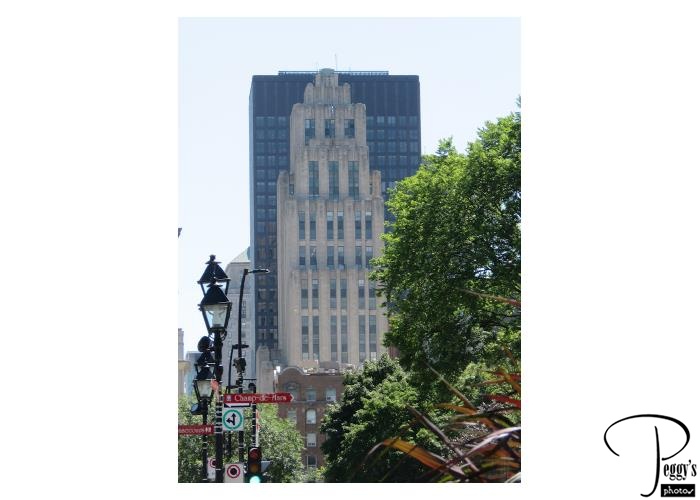
A photo contrasting an old building in Montreal in front of a modern glass building in the historic Old Montreal section.

The Old & the New
Place Jacques-Cartier
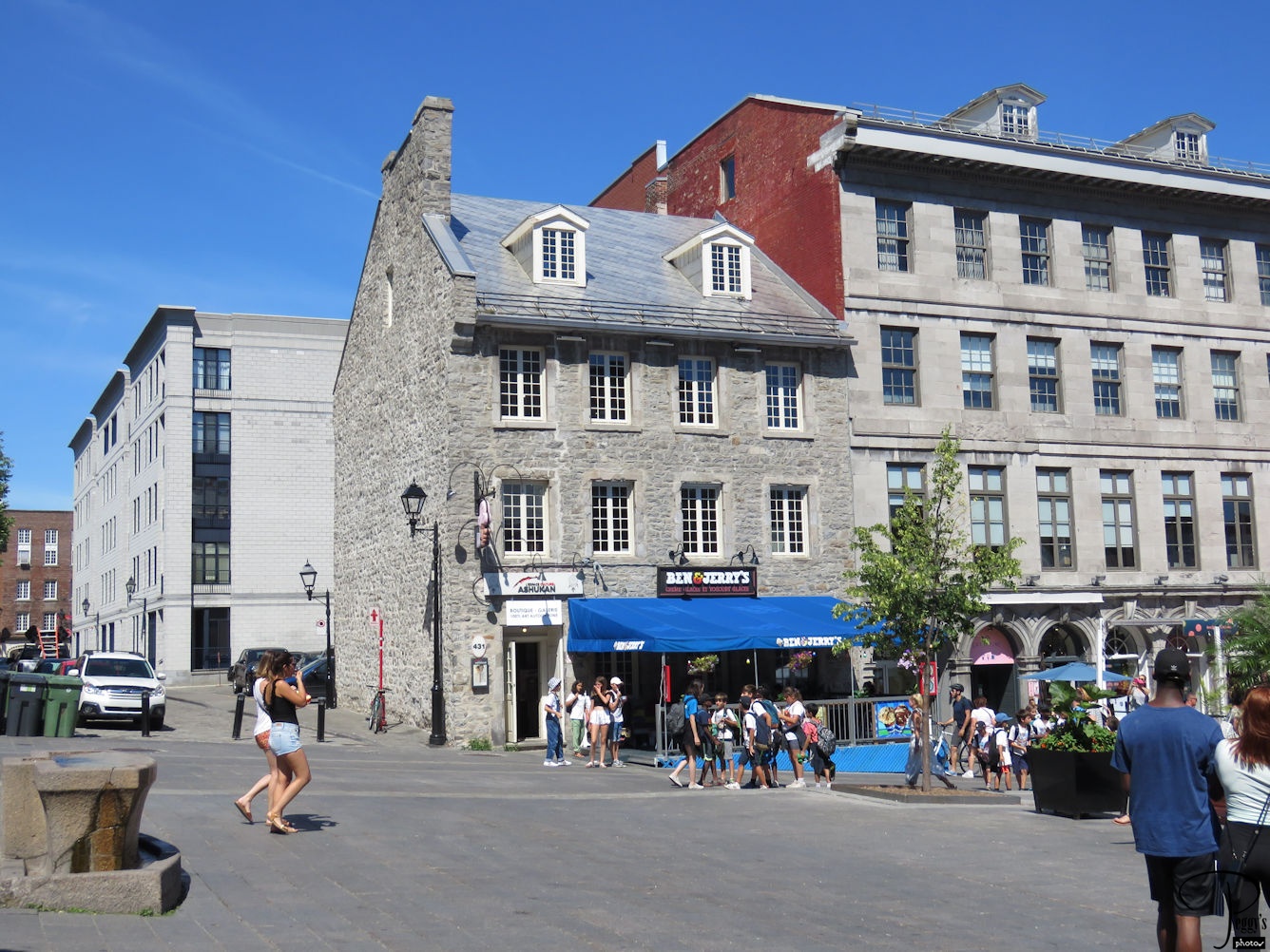
We next walked to Place Jacques–Cartier, which has old buildings, restaurants, and shops. It is a pleasant place to walk.

Place Jacques-Cartier
Dinner Cruise
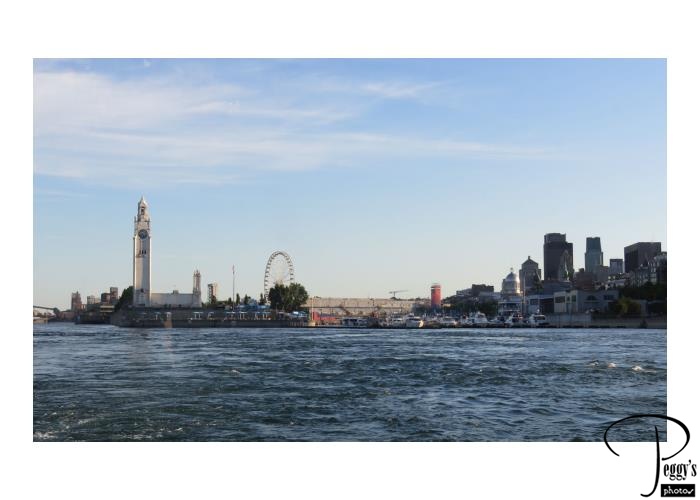
This evening we took a dinner cruise on the Saint Lawrence River. Except for the small harbor and the views of Old Montreal, the rest of the cruise was past container ports and container ships. Each party had their own table to sit at, not like some other dinner cruises where you sit at big tables and meet new people. The dinner was good.

Dinner Cruise
Habitat 67
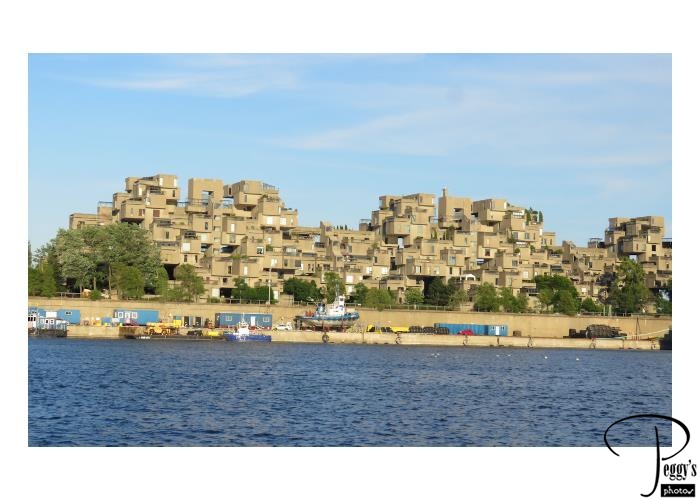
A very interesting sight we passed by, though at a distance, was Habitat 67, an apartment complex designed by Israeli/Canadian architect Moshe Safdie and built as a pavilion for Expo 67. It is made up of 345 prefabricated concrete forms, creating 146 apartments.

Habitat 67
Dinner Cruise–MOVIE
One very pretty sight was the lit–up Jacques Cartier Bridge. It had lights moving up and down, which can be seen in the movie. The dinner cruise turned into a party cruise with loud music and dancing after dinner.
Youtube: https://youtu.be/QM0VESn9VyA

Dinner Cruise–MOVIE
Basilique Notre-Dame at Night
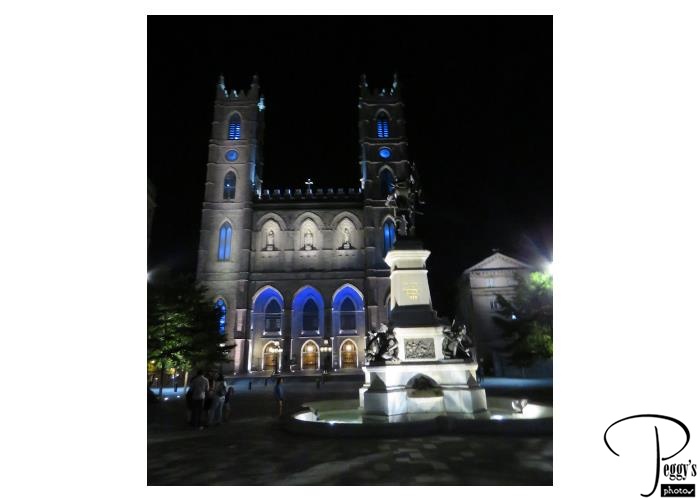
After the dinner cruise, we walked back to our hotel. On the way, we saw the Basilique Notre–Dame lit up at night.

Basilique Notre-Dame at Night
Montreal’s Chinatown
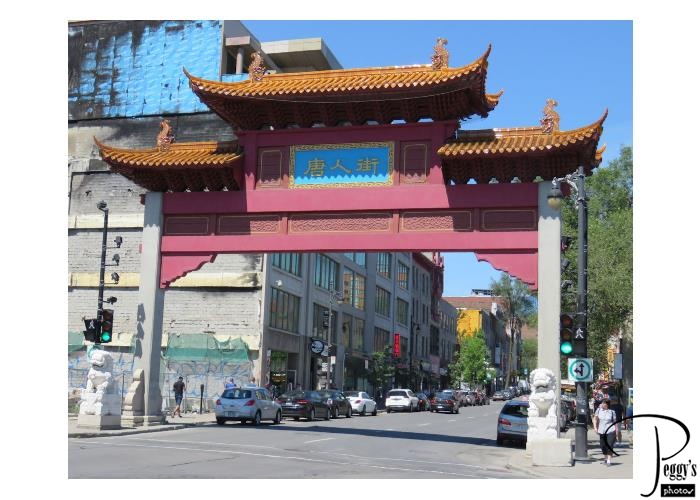
The next day we visited Montreal’s Chinatown, established 1877.

Montreal’s Chinatown
Montreal’s Chinatown
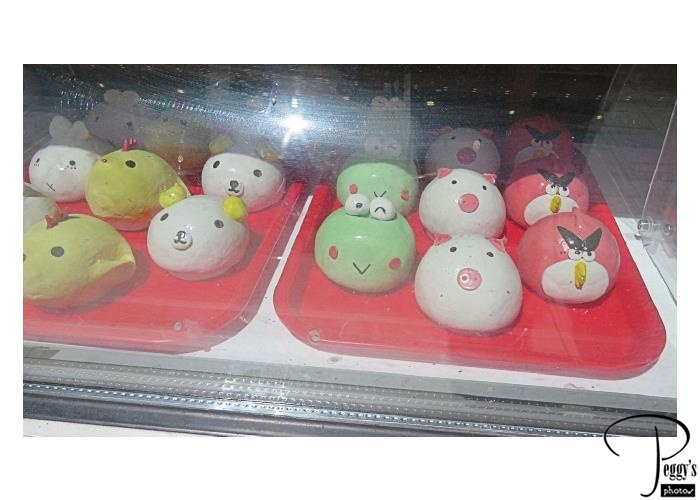
Montreal’s Chinatown had many restaurants, bakeries, and stores. These cute dumplings were being sold at a store.

Montreal’s Chinatown
Wine Tour
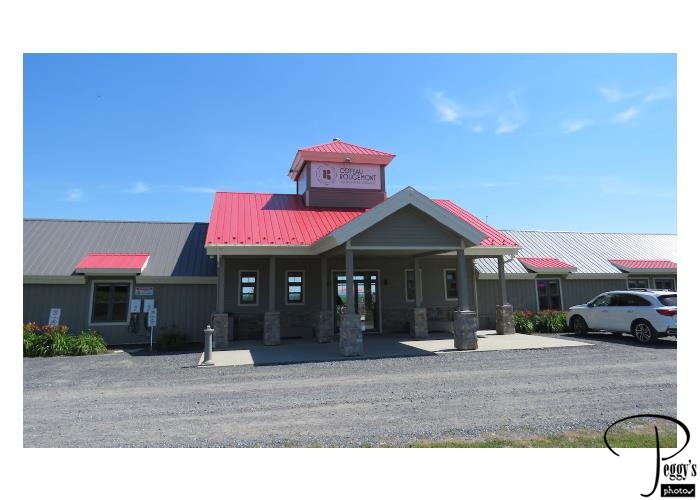
In the afternoon, we took a wine tour outside Montreal. We visited the Coteau Rougemont, which has 50,000 vines and 40,000 apple trees––they produce both wine and cider. For the wine, they use hybrid grapes that adapt to a northern climate with a short growing season.

Wine Tour
Wine Tour
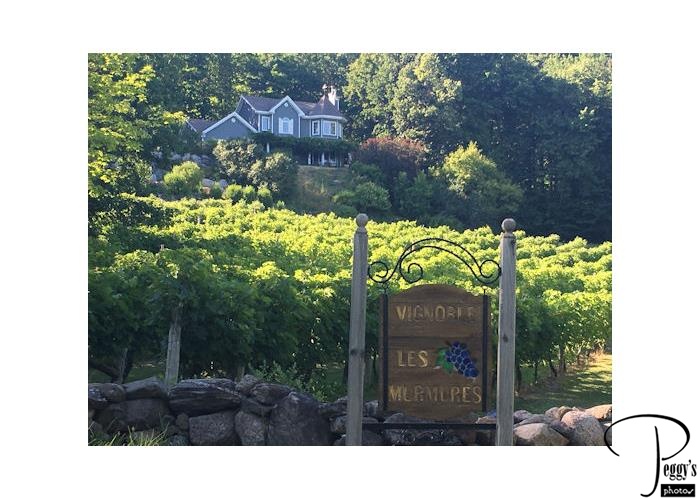
The other winery that we visited was the small Vignoble Les Murmeres.

Wine Tour
Food Tour
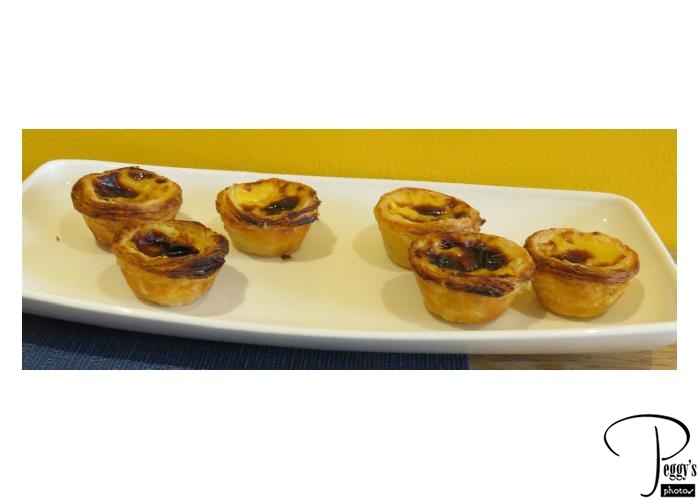
The next day we took a food and cultural tour in Old Montreal. Our first stop was at a Portuguese bakery, where we had pastel de nata, which is an egg tart that was created before the 18th century by Catholic monks at the Jeronimos Monastery in Lisbon. I ate many of them when I was in Portugal and haven’t seen them since, so I was very happy to be able to eat them again.

Food Tour
Food Tour
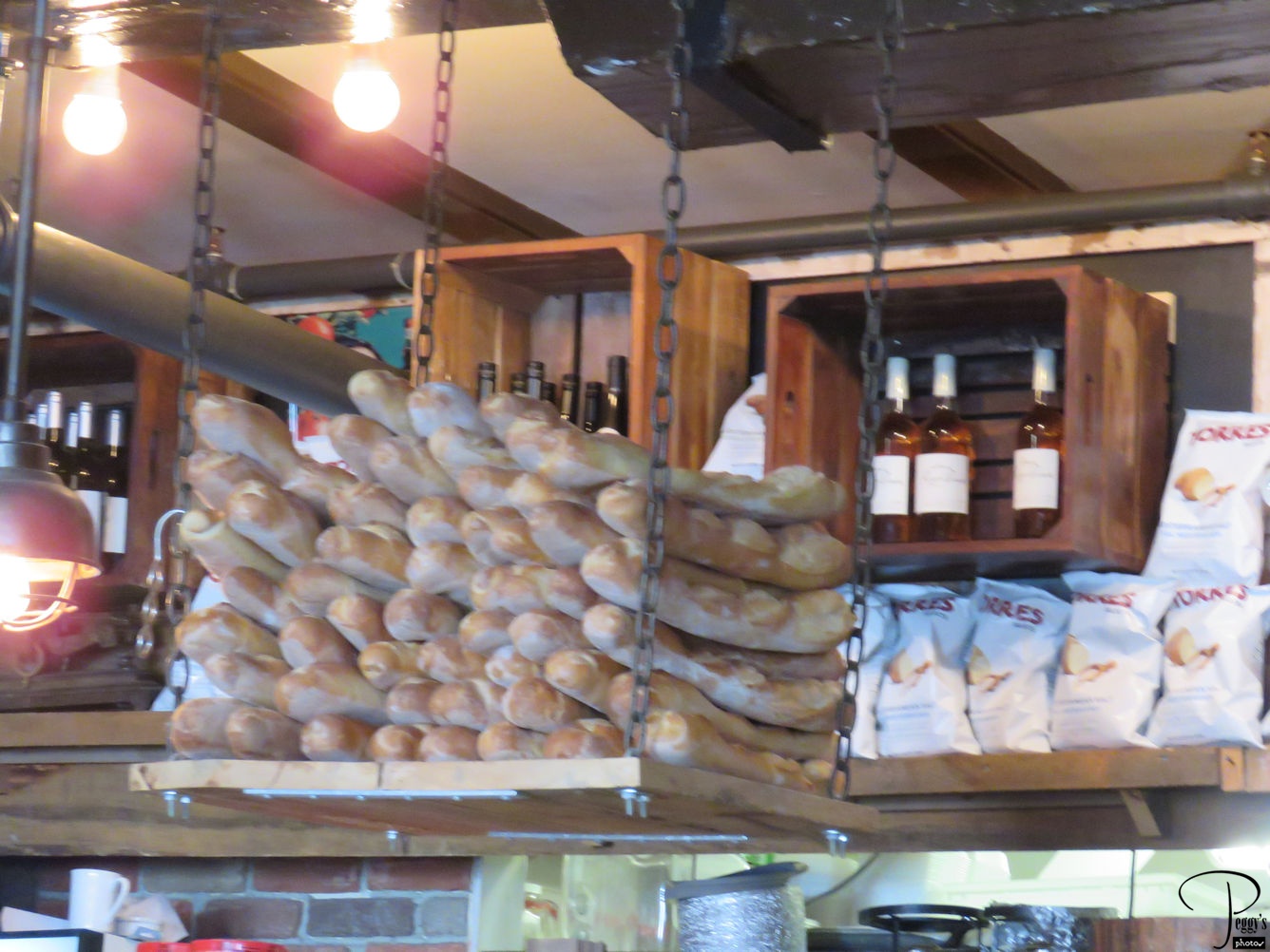
Our next stop was at a French restaurant that had a display of freshly baked French baguettes.

Food Tour
Food Tour
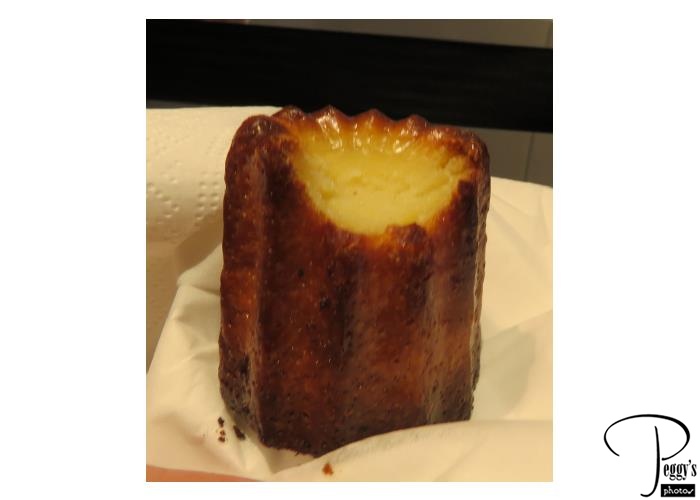
At another stop, we had canneles de Bordeaux, a treat that I had in France. Very good.

Food Tour
Hop-on Hop-off Bus
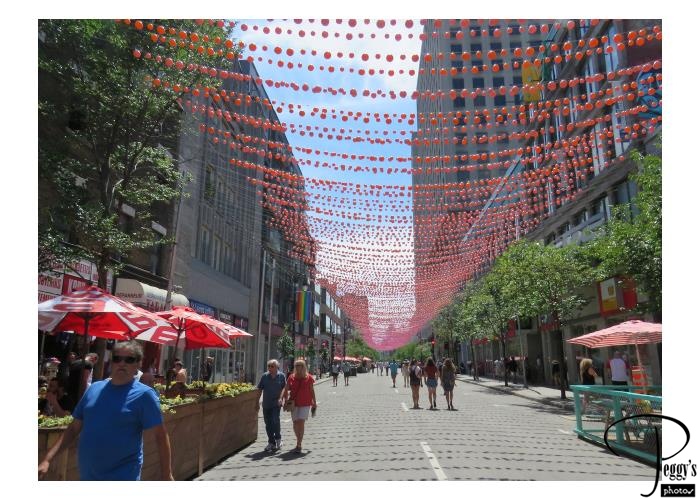
After our food tour, we got on the hop–on hop–off bus. We had seen where the bus stopped on our food tour, so no problem finding the spot, but no signs tell you where the bus will stop in Montreal as the city doesn’t allow signs. So you need to find the cross streets as to where the bus picks up, which is not always an exact location. We got off at a neighborhood of Montreal called the Village which had multicolored balls across its streets.
Our food tour guide was born in Kenya and spoke at least five languages. In the winter, she goes back to Kenya to live. Coincidentally, one of the men on the tour was from Kenya though living in the U.S. He joined us on the hop–on hop–off bus and was very good company.

Hop-on Hop-off Bus
Latin Quarter
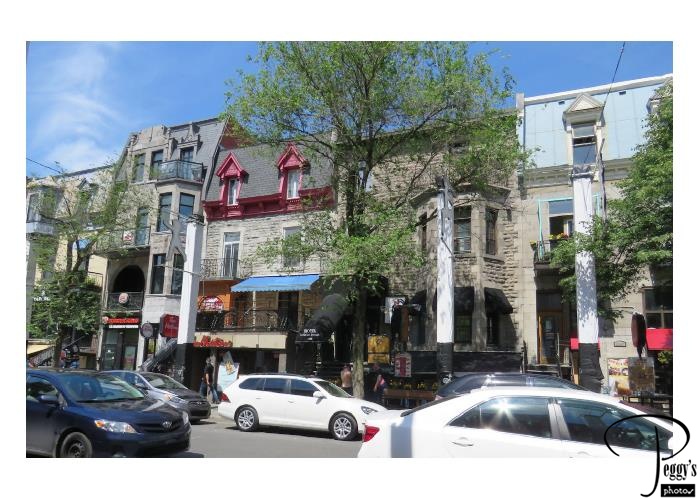
We walked from the Village to the Latin Quarter rather than to get back on the hop–on hop–off bus, not a long walk. The Latin Quarter has rows of interesting old buildings.

Latin Quarter
Latin Quarter
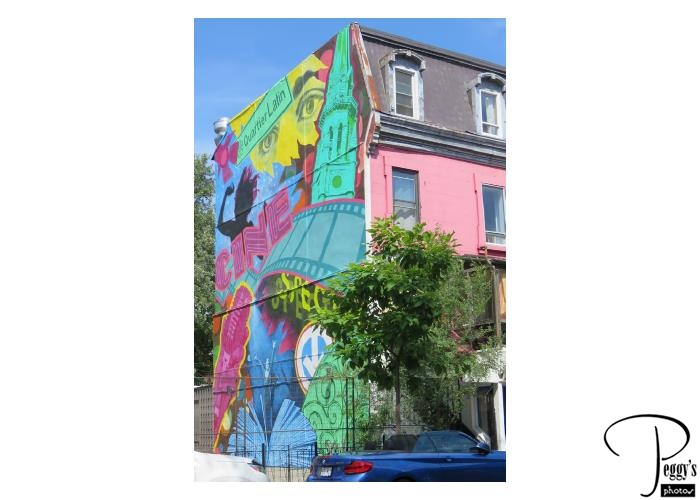
The Latin Quarter also has many murals.

Latin Quarter
Hop-on Hop-off Bus
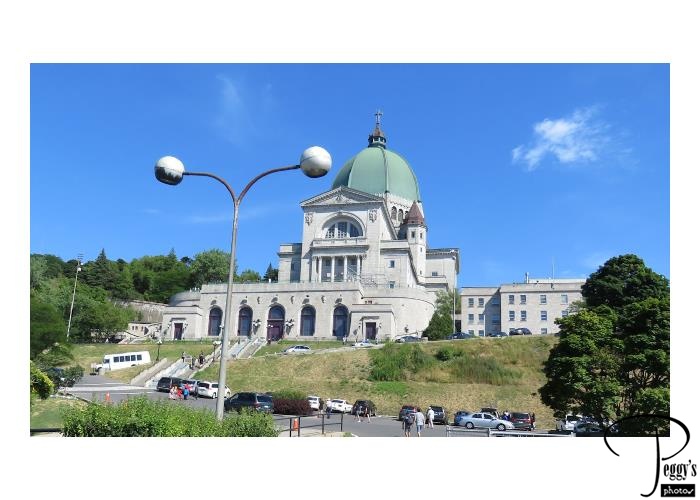
The hop–on hop–off bus took us up to Mont Royal and made a stop at the Saint Joseph’s Oratory of Mount Royal. It was on my list of sights to see, but at the end of the day, I didn’t have enough energy left to climb up the steps to go inside it. The hop–on hop–off bus was at the end of its run for the day and dropped us off in an area where we really know where we were. It took awhile to find a taxi to take us back to our hotel.

Hop-on Hop-off Bus
Light Show at Notre-Dame
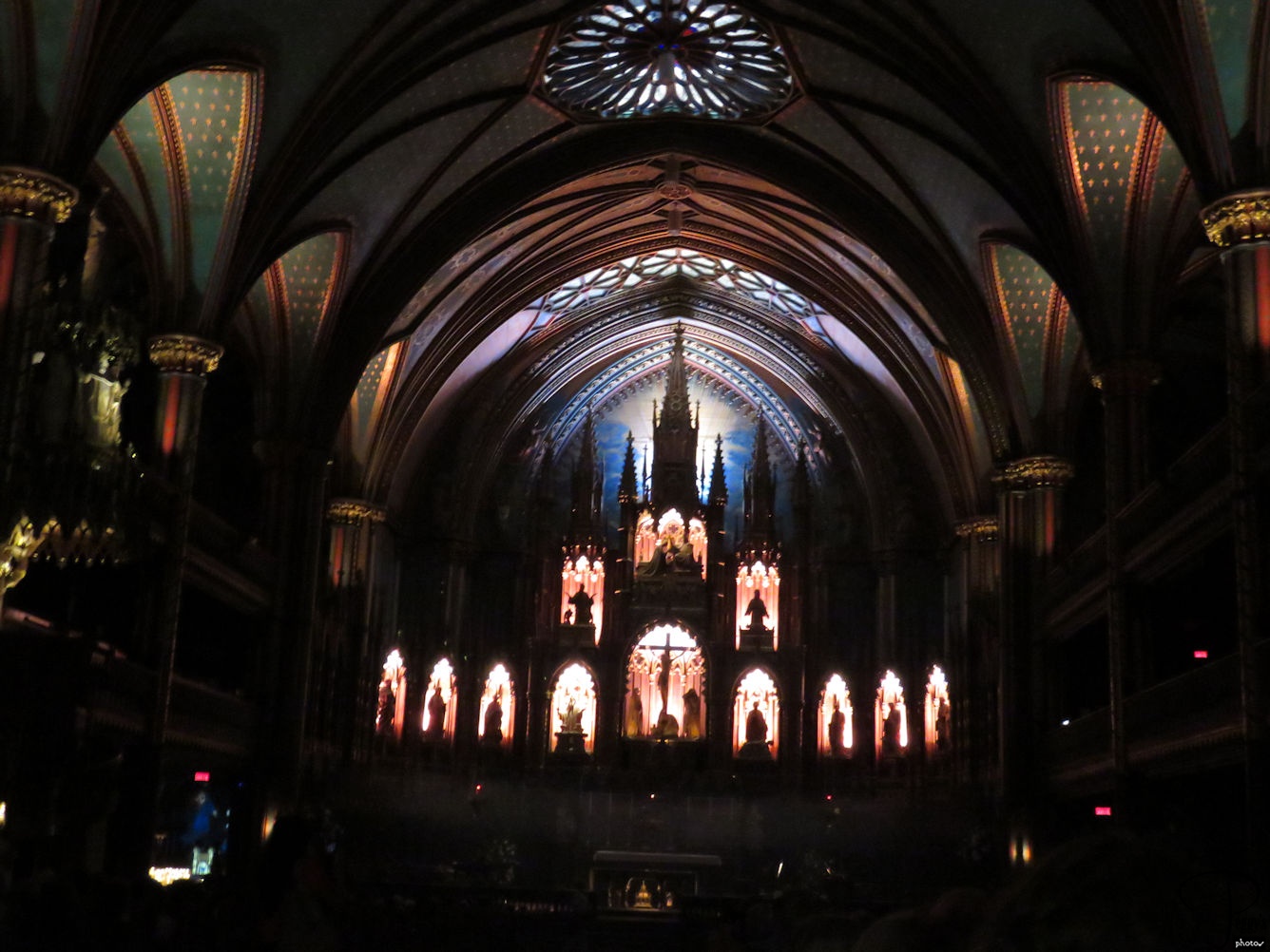
This evening we went to a light show at the Basilique Notre–Dame. No photos or video were allowed during the show, but you can Google “Light Show at Notre–Dame Montreal” to find videos of the show, which was excellent.

Light Show at Notre-Dame
Leaving Montreal
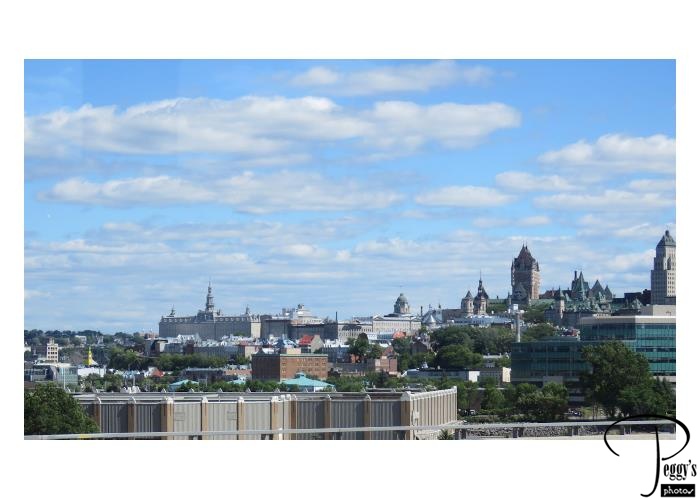
The next day we left Montreal to return home: my daughter to Chicago and me to Los Angeles via Chicago. The plane from Montreal to Chicago was the same small size as the one we had taken from Chicago to Quebec City. It was raining when we left and rain was predicted for the whole next week, so we were not sad that we were leaving though there was much left to explore in Montreal such as more of its neighborhoods, the Underground stores, and the artwork in its Metro.
I have put my photos of Montreal on three slideshows. Go to
http://www.peggysphotos.com/montreal–1/
http://www.peggysphotos.com/montreal–2/
http://www.peggysphotos.com/montreal–3/
(Slide Shows, Canada, “Montreal–1, –2, and –3).
